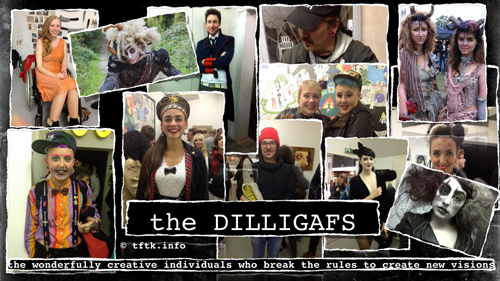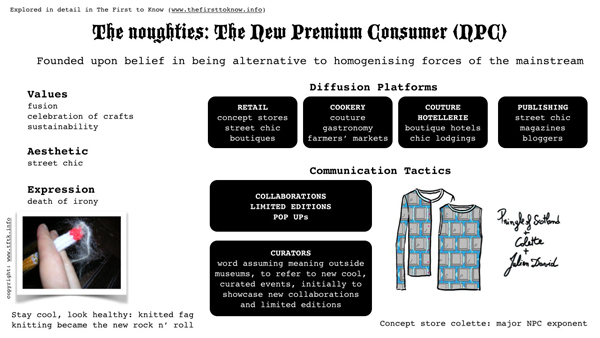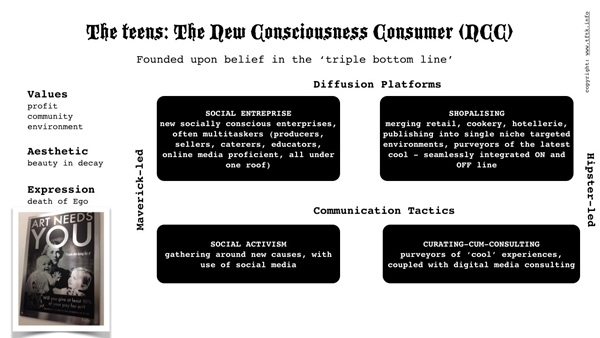Dr Lida Hujić
With a title like this, you’d be forgiven for thinking that Halloween came early. During the season to be gory, all things ghoulish predictably fill up editorial pages of consumer press. Communication campaigns – and supermarket shelves likewise – succumb to the dictate of the calendar, which stipulates that pumpkins, spiders, witches and skulls ornate packaging or cake toppings. Orange and black become de rigueur.
But what if black were, well, the next black? In shades ranging from noir to grisly with spots of blood, what if macabre were here to stay? Not just for Halloween, not just for one season, but, rather, for a reasonable amount of time for any brand to seriously consider this new aesthetic sensibility and its drivers?
While much of the mainstream communication campaigns and seasonal product manias are safely premised on turning calendar holidays into commercial opportunities (Halloween, Christmas, Valentine’s and so on, on a 12-monthly loop), the trends that challenge established norms come from the underground, which operates in its own time. Cutting-edge scenes live their own lives away from the commercial glare. They cyclically get catapulted into the spotlight and start permeating the mainstream through the adoption of their codes.
Over the past few years, the major trend with underground roots was ‘vintage’. At first, around the turn of the teen decade, ‘vintage’ was hip. Over time, its iconography became visible everywhere, from music to fashion, from design to experiential events. With laggard brands now using this theme during daytime TV advertising breaks, it is safe to assume that this trend has reached overkill.
This means that vintage enthusiasts will revert to their communities, living the life away from the limelight. The trend followers – those who were the first to adopt vintage codes in their personal style and social life and networks – will move onto the next thing. The doyens from the vintage scene will reinvent themselves. And, it is by looking into how these elusive individuals evolve that we can gauge what the next thing will be. I coined the term ‘Dilligafs’ – inspired by an unsuspecting scenester’s tattoo – to distinguish the non-conformist, who are the alpha trendsetters, from trend followers. The latter quickly emulate trendsetters but have neither innovative ideas nor the relevant networks of connections. Far too often, the brand industry confuses the two, namely because access to Dilligafs at the source is impossible without insider connections.
In this universe where the future has already happened, we find that the outlook is macabre – aesthetically speaking. In terms of energy, it’s anything but. The fascination for all things gory has been building up momentum over the past few years. Networks of individuals from all over the world are expanding, bound by interest in things described in their language as: ‘gothic’, ‘industrial’, ‘curiosity’, ‘Victoriana’, ‘woodoo’, ‘magic’, ‘shamanistic’, ‘surgical’, ‘anatomical’, ‘anthropomorphic’, ‘kinetic’ and similar. Though still underground, this universe is increasingly catching the attention of opinion formers, namely through exhibitions showcasing macabre art and other curated experiences, ranging from funeral-themed club-nights to taxidermy classes, from festivals dedicated to gore to retail environments, specialising in curiosities.
However, unlike ‘vintage’, which primarily provided cues for style and communication, the macabre is also an indicator of a deeper change. This need for change is manifested, on the one hand, through the rise of movements challenging the status quo (dissatisfaction with the state of society and values). On the other, it is tangible through the increasing pressures of the corporate industry to deliver ‘breakthrough’ innovation. Because of higher investment in risk-taking, the impulse for breakthrough innovation is less frequent than the need to refresh brand communication strategies and product/service innovation but the market today has reached the point where acting disruptively is necessary to stay competitive.
Making connections between the ‘macabre’ and future economies is matter of futurology by looking the past, something I call ‘the first to know’ framework (introduced in the same entitled book, www.thefirsttoknow.info). The fundamental principle here is that by separating fads from the type of cultural manifestations with lasting potential, it is possible to identify at the earliest stage the early adopter market. This segment is born out of the union of hipsters (cutting-edge scenes) and mavericks (risk-takers with disruptive business ideas). They are the first to adopt new consuming visions. Not only are they prepared to invest a premium into these new products/services but they also act as an indicator of what the early majority and then late majority will be following in terms of mainstream consumption patterns.
At times when corporate innovation runs dry, the union of hipsters and mavericks provide scenarios for new consuming visions. Rather than projecting into the future to identify this new market it is about looking at the past and comparing like for like. The early adopter of the 00s was dubbed the ‘New Premium Consumer’ (NPC).
In the teens, it will all be about the ‘New Consciousness Consumer’ (the NCC). Their values are founded upon the ‘triple bottom line’ – the trilogy: ‘profit’, ‘community’, ‘environment’. There are only three elements but they will most likely drive the next paradigm shift in consumption, as we are moving from linear towards circular economies. Equally important are the new technological developments, which are redefining our sense of place and space.
The implications of macabre for the brand industry are best understood in the context of innovation, which in turn depends on time-scale. Looking ahead, disruptively, it is about adapting your business to some extent and in a bespoke fashion to the ‘triple bottom line’. Looking at the medium term (communication strategies and NPD), it is about tapping into the universe of emerging hipsters and mavericks for inspiration cues. Finally, in the most immediate term, forget vintage. Think macabre. Adopt the codes. If you are operating in the areas of design (fashion to graphics) & opportune brand activation tactics, make sure there is plenty of gore. Let steam punk power you or do zombie chic. More than ever before, Halloween 2014 will be an extravaganza to really look forward to.
Dr Lida Hujić is an insight/innovation consultant and trend expert.





